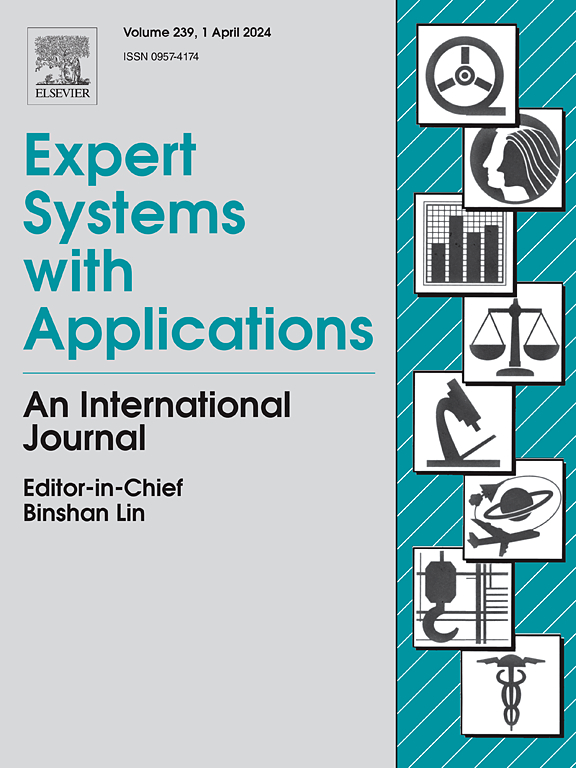通过减少信号和深度学习提高基于惯性传感器的体育活动识别能力
IF 7.5
1区 计算机科学
Q1 COMPUTER SCIENCE, ARTIFICIAL INTELLIGENCE
引用次数: 0
摘要
运动训练和健康监测的需求与日俱增,这与当代生活方式的发展趋势不谋而合。开发一个支持体育训练和验证运动正确性的系统,可以大大提高获取详细的、针对特定对象的数据的能力。本研究旨在评估体育锻炼识别的准确性,同时尽量减少所需的传感器数量。数据集包括 8968 个运动样本,如单杠下蹲、深蹲、俯卧撑、仰卧起坐、引体向上、仰卧起坐和俯卧撑。数据是使用安装在 21 名受试者胸部、右手和右脚的移动传感器从 60 个信号中收集的。目的是找出识别这些活动的最有效方法。我们的方法包括在定制的装置中对 21 名参与者进行实验,并应用深度学习技术。最初,一种新颖的算法确定了最佳信号集。然后,我们测试了两种情况:在原始信号上训练卷积神经网络(CNN),以及在预处理信号上训练卷积神经网络以减少噪音。研究结果表明,磁场(MF)信号对于识别过滤和未过滤数据集中的练习至关重要。在未过滤数据中,CNN 的准确率高出 2-3%,尽管模型复杂度有所降低,但训练和测试的准确率仍分别为 93.7% 和 90.0%。这种方法具有重要的实际意义,它通过减少所需的传感器数量来增强运动训练系统,从而提高用户的舒适度。此外,它还为人类活动识别领域提供了宝贵的见解。本文章由计算机程序翻译,如有差异,请以英文原文为准。
Enhancing inertial sensor-based sports activity recognition through reduction of the signals and deep learning
The increasing demand for sport training and health monitoring aligns with contemporary lifestyle trends. Developing a system to support sport training and verify exercise correctness can significantly enhance the acquisition of detailed, subject-specific data. This study aims to evaluate the accuracy of sport exercise recognition while minimizing the number of sensors required. The dataset includes 8,968 samples of exercises such as bar dips, squats, dips, lunges, pull-ups, sit-ups, and push-ups. Data were collected from 60 signals using mobile sensors positioned at the chest, right hand, and right foot of 21 subjects. The objective is to identify the most efficient method for recognizing these activities. Our methodology involved experiments with 21 participants in a custom-built setup and the application of deep learning techniques. Initially, a novel algorithm identified the optimal set of signals. We then tested two scenarios: training a Convolutional Neural Network (CNN) on raw signals and on pre-processed signals to reduce noise. The findings indicate that the magnetic field (MF) signal is crucial for recognizing exercises in both filtered and unfiltered data sets. The CNN’s accuracy was 2–3% higher with unfiltered data and remained robust at 93.7% for training and 90.0% for testing, despite a reduction in model complexity. This method’s practical implications are significant, enhancing sports training systems by reducing the number of sensors needed, thereby improving user comfort. Additionally, it contributes valuable insights to the field of Human Activity Recognition.
求助全文
通过发布文献求助,成功后即可免费获取论文全文。
去求助
来源期刊

Expert Systems with Applications
工程技术-工程:电子与电气
CiteScore
13.80
自引率
10.60%
发文量
2045
审稿时长
8.7 months
期刊介绍:
Expert Systems With Applications is an international journal dedicated to the exchange of information on expert and intelligent systems used globally in industry, government, and universities. The journal emphasizes original papers covering the design, development, testing, implementation, and management of these systems, offering practical guidelines. It spans various sectors such as finance, engineering, marketing, law, project management, information management, medicine, and more. The journal also welcomes papers on multi-agent systems, knowledge management, neural networks, knowledge discovery, data mining, and other related areas, excluding applications to military/defense systems.
 求助内容:
求助内容: 应助结果提醒方式:
应助结果提醒方式:


